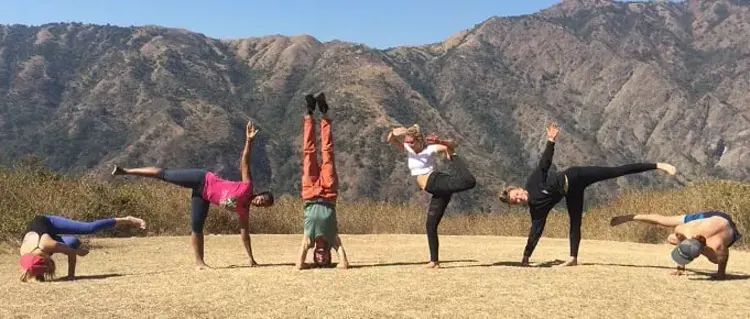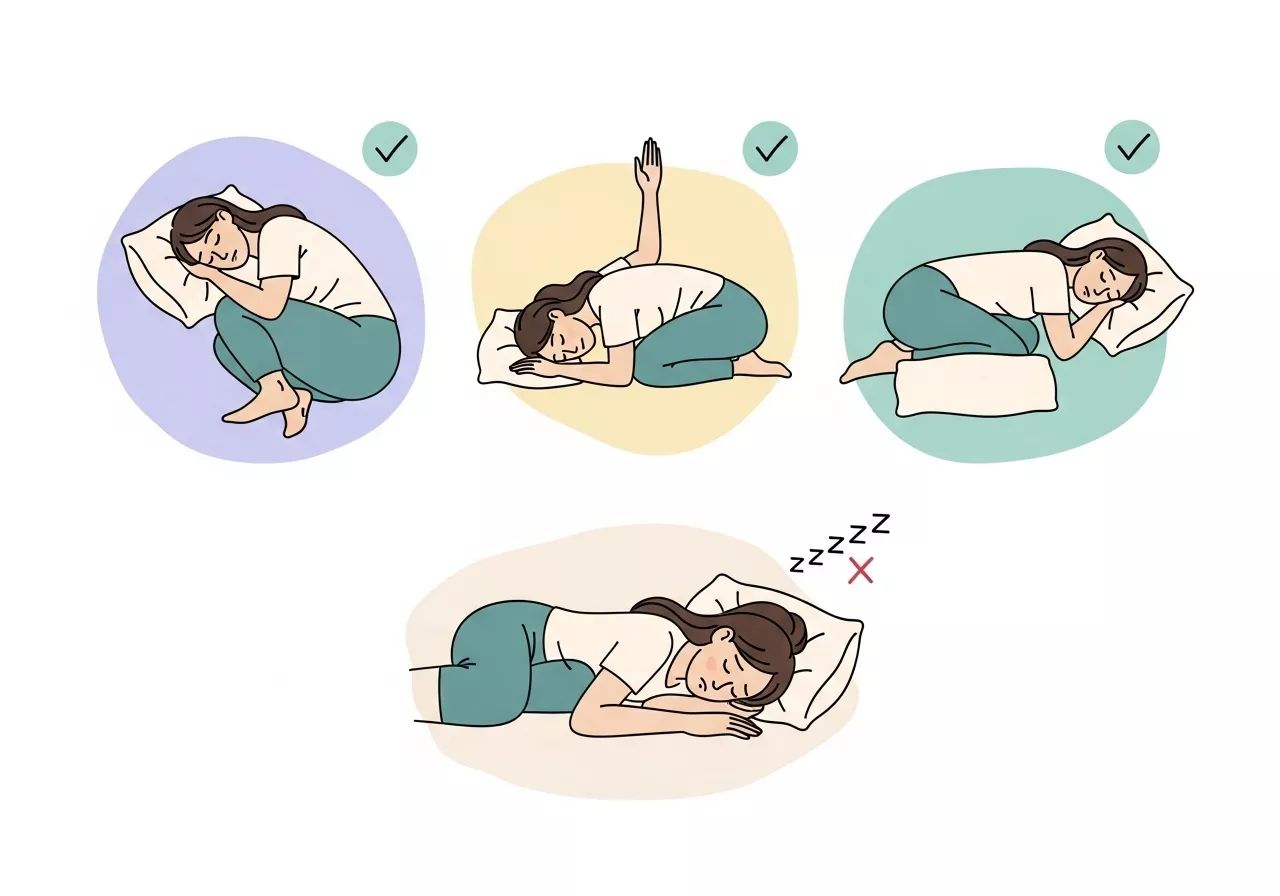Yoga is a vast and multifaceted discipline, and its different branches cater to various aspects of physical, mental, and spiritual development.
Among the many forms of yoga, Raja Yoga, Hatha Yoga, and Kriya Yoga are distinct paths with unique philosophies, practices, and goals.

Understanding their differences can help you choose the one that aligns with your personal goals and spiritual journey.
1. Raja Yoga
Raja Yoga is often referred to as the “Royal Path” of yoga. It emphasizes mental discipline and self-control to achieve spiritual enlightenment.

This form of yoga is rooted in the philosophy of Patanjali’s Yoga Sutras and focuses on the eightfold path, also known as Ashtanga Yoga (not to be confused with the physical practice of the same name).
Core Practices:
- Meditation (Dhyana): The central focus of Raja Yoga is deep meditation to calm the mind and reach higher states of consciousness.
- Self-Discipline (Yamas and Niyamas): Ethical guidelines for personal and social conduct.
- Breath Control (Pranayama): Techniques to regulate and focus energy through breathing.
- Concentration (Dharana): Training the mind to focus on a single object or thought.
Goal:
- The ultimate aim of Raja Yoga is Samadhi, or self-realization, where one transcends the ego and merges with the universal consciousness.
Who Is It For?:
- Ideal for those seeking a meditative and introspective approach to yoga.
- Suitable for individuals interested in spiritual growth and mastering the mind.
2. Hatha Yoga
Hatha Yoga is the physical branch of yoga that emphasizes asana (postures) and pranayama (breathing techniques) to prepare the body and mind for meditation.

The word “Hatha” translates to “forceful” or “willful,” symbolizing balance between the opposing energies of the body—Ha (sun) and Tha (moon).
Core Practices:
- Physical Postures (Asanas): Hatha Yoga introduces a wide variety of poses to build strength, flexibility, and balance.
- Breathing Techniques (Pranayama): Exercises to harmonize the breath and energy flow.
- Cleansing Techniques (Shatkarmas): Practices like nasal cleansing to purify the body.
- Relaxation (Savasana): Techniques to reduce stress and prepare the body for meditation.
Goal:
- The primary aim of Hatha Yoga is to create physical and mental balance, preparing the practitioner for deeper spiritual practices like meditation.
Who Is It For?:
- Perfect for beginners and those looking for a physical entry point into yoga.
- Suitable for individuals who want to improve their overall health, flexibility, and stress management.
3. Kriya Yoga
Kriya Yoga is a spiritual path focused on energy control and self-realization through specific techniques.

It was popularized in the West by Paramahansa Yogananda in his book Autobiography of a Yogi. “Kriya” means “action,” and this form of yoga emphasizes actions or practices that lead to liberation.
Core Practices:
- Pranayama: Advanced breathing techniques to direct life energy (prana) up and down the spine.
- Mantra: Repetition of sacred sounds to focus the mind.
- Meditation: Techniques to awaken spiritual energy (Kundalini) and transcend the ego.
- Self-Discipline: Emphasizes devotion, ethical living, and surrender to a higher power.
Goal:
- The ultimate aim of Kriya Yoga is self-realization and union with the divine by purifying the body and mind and awakening spiritual energy.
Who Is It For?:
- Suitable for dedicated spiritual seekers looking for a structured path to enlightenment.
- Ideal for individuals ready to commit to advanced practices under a qualified teacher.
Key Differences at a Glance
| Aspect | Raja Yoga | Hatha Yoga | Kriya Yoga |
|---|---|---|---|
| Focus | Mental discipline and meditation | Physical postures and breathing | Energy control and spiritual growth |
| Primary Goal | Self-realization through the mind | Physical and mental balance | Awakening spiritual energy |
| Core Practices | Meditation, breath control, ethics | Postures, breathwork, cleansing | Advanced pranayama, meditation, mantra |
| Audience | Spiritual seekers, meditators | Beginners, physical fitness seekers | Advanced spiritual practitioners |
| Philosophy | Based on Patanjali’s Yoga Sutras | Rooted in traditional yoga texts | Taught through Paramahansa Yogananda |
Choosing the Right Path: Which Yoga Style Is Best for You?
Selecting the right yoga path—whether Raja Yoga, Hatha Yoga, or Kriya Yoga—depends on your personal goals, interests, and where you are in your life journey.

Each style offers unique benefits and approaches to physical, mental, and spiritual growth. Here’s a detailed guide to help you decide which yoga path aligns best with your needs.
1. Choosing Raja Yoga: The Path of Mental Discipline and Meditation
Raja Yoga is often considered the “royal path” because it focuses on mastering the mind and achieving spiritual enlightenment through meditation and self-control.
It’s a systematic approach that guides practitioners through the Eight Limbs of Yoga, including ethical principles, physical discipline, breath control, and meditation.
Who Is It For?
- Spiritual Seekers: If your primary goal is self-realization and inner peace, Raja Yoga offers a structured and profound path.
- Meditation Enthusiasts: Ideal for individuals who enjoy introspection and exploring higher states of consciousness.
- Those Seeking Mental Clarity: If you’re dealing with stress, anxiety, or a restless mind, the mental focus of Raja Yoga can bring calm and clarity.
Key Practices to Start:
- Daily Meditation: Begin with simple mindfulness or guided meditations.
- Focus on the Eightfold Path: Incorporate ethical principles (Yamas and Niyamas) into daily life.
- Breathing Exercises (Pranayama): Practice breath control to calm the mind and prepare for meditation.
Challenges:
- Requires patience and consistent practice.
- Can feel abstract or challenging for those new to meditation.
2. Choosing Hatha Yoga: The Path of Physical Discipline
Hatha Yoga emphasizes physical postures (asanas) and breath control (pranayama) to prepare the body and mind for meditation.
It’s one of the most accessible forms of yoga, making it a great starting point for beginners.
Who Is It For?
- Beginners: If you’re new to yoga, Hatha Yoga provides a gentle introduction to physical and mental discipline.
- Fitness Enthusiasts: Ideal for those seeking improved strength, flexibility, and balance.
- Stress Relief Seekers: Great for individuals looking to unwind and find relaxation through physical movement.
Key Practices to Start:
- Simple Asanas: Start with foundational poses like Mountain Pose (Tadasana), Downward-Facing Dog (Adho Mukha Svanasana), and Child’s Pose (Balasana).
- Breathwork: Incorporate basic pranayama techniques such as Nadi Shodhana (alternate nostril breathing) or Ujjayi breath.
- Gentle Sequences: Explore beginner yoga flows that combine movement and breathing.
Challenges:
- Focus is primarily on the physical, which may not appeal to those looking for deep spiritual practices.
- Progress can feel slow without incorporating meditation or other advanced practices.
3. Choosing Kriya Yoga: The Path of Energy Control and Spiritual Awakening
Kriya Yoga is a deeply spiritual practice that involves advanced techniques to control energy (prana) and awaken inner consciousness.
It’s designed for individuals who are committed to spiritual growth and willing to follow a disciplined path.
Who Is It For?
- Advanced Practitioners: Best suited for those with some prior experience in yoga or meditation.
- Dedicated Spiritual Seekers: If your goal is self-realization and connecting with the divine, Kriya Yoga offers profound techniques to accelerate spiritual growth.
- Energy Healers: Ideal for those interested in working with life force energy (prana) and Kundalini awakening.
Key Practices to Start:
- Learn from a Teacher: Kriya Yoga techniques are best learned from a qualified teacher or lineage.
- Daily Meditation and Pranayama: Advanced breathing techniques are a cornerstone of this practice.
- Mantra Practice: Use mantras to focus the mind and elevate spiritual awareness.
Challenges:
- Requires dedication and consistency.
- Practices are often complex and may not be suitable for beginners without proper guidance.
How to Decide Which Path Is Right for You
- Identify Your Goals:
- If your goal is physical health and flexibility, start with Hatha Yoga.
- If you’re seeking mental clarity and peace, Raja Yoga might be your path.
- For those aiming for deep spiritual transformation, Kriya Yoga is the most suitable choice.
- Consider Your Current Level:
- Beginners: Hatha Yoga is an excellent starting point to build a foundation.
- Intermediate: Explore Raja Yoga to deepen mental and spiritual discipline.
- Advanced: Dive into Kriya Yoga for transformative spiritual practices.
- Evaluate Your Lifestyle:
- If you prefer a physical approach, Hatha Yoga fits into a fitness-oriented lifestyle.
- If you enjoy introspection and meditation, Raja Yoga complements a contemplative life.
- For those with a dedicated spiritual practice, Kriya Yoga offers profound depth.
- Test Each Path:
- Many practitioners start with Hatha Yoga to build physical discipline, then incorporate Raja Yoga for mental clarity and transition to Kriya Yoga for spiritual awakening.
Blending the Paths
While each yoga path has its unique focus, they are interconnected. Many practitioners blend elements of all three:
- Use Hatha Yoga to prepare the body for stillness.
- Incorporate Raja Yoga techniques to calm the mind.
- Practice Kriya Yoga for energy control and spiritual growth.
Choosing the right yoga path is a deeply personal decision. Whether you’re looking to improve physical health, achieve mental peace, or embark on a spiritual journey, yoga has something to offer.
Take time to explore each path, listen to your inner guidance, and embrace the one that resonates most with your needs and aspirations.
Remember, yoga is a journey of self-discovery, and any path you choose will bring you closer to understanding yourself and the world around you.
Conclusion
Raja Yoga, Hatha Yoga, and Kriya Yoga are all profound paths within the yoga tradition, each offering unique benefits and approaches.
Whether you’re looking for physical health, mental discipline, or spiritual enlightenment, there’s a path suited to your needs.
Explore each form with an open heart and mind, and let your personal goals guide your choice.



